calsfoundation@cals.org
Dover (Pope County)
| Latitude and Longitude | 35°24’05″N 093°06’52″W |
| Elevation: | 449 feet |
| Area: | 2.83 square miles (2020 Census) |
| Population: | 1,337 (2020 Census) |
| Incorporation Date: | June 14, 1870 |
Historical Population as per the U.S. Census:
|
1810 |
1820 |
1830 |
1840 |
1850 |
1860 |
1870 |
1880 |
1890 |
1900 |
|
– |
– |
– |
– |
– |
– |
– |
368 |
528 |
373 |
|
1910 |
1920 |
1930 |
1940 |
1950 |
1960 |
1970 |
1980 |
1990 |
2000 |
|
385 |
388 |
510 |
493 |
510 |
525 |
662 |
948 |
1,055 |
1,329 |
|
2010 |
2020 |
|
|
|
|
|
|
|
|
|
1,378 |
1,337 |
|
|
|
|
|
|
|
|
Dover was once the county seat of Pope County and the major site of a series of violent post-Reconstruction events known collectively as the Pope County Militia War. Though its influence diminished after it was bypassed by the railroad in the early 1870s, it remains an important community within the county.
Louisiana Purchase through Early Statehood
Stories vary regarding the origin of Dover and its name. According to one, Joseph Brearley, who migrated to Pope County in the 1830s, settled near present-day Dover and named the site either after his hometown in Delaware or after the city in England. Another story holds that a man named Stephen Rye settled in the area in 1832 and named the city he laid out after his hometown in Tennessee.
The Dover to Clarksville Road was heavily used in the 1830s and added to the National Register of Historic Places in 2005.
After the creation of Yell County removed parts of Pope County in 1840, Norristown, which had been the county seat, was no longer centrally located in the county. Dover was thus named the county seat in 1841. Tom Moss built the first grocery, which was followed by other stores, as well as a hotel. The first school was built in the 1840s, after classes had been held for a while at the Masonic hall. Two companies for the Mexican War were raised in Dover in 1846. Dover applied for a post office in 1854, and the first jail was completed in April 1857.
Civil War through the Gilded Age
On July 22, 1861, after the state had joined the Confederate cause, the Pope County Court established units of Home Guards for each township. On April 29, 1862, the court authorized the removal of county records from Dover; they were kept in a cave five miles north of the city until July 27, 1865. There is mention of a Civil War skirmish at Dover on May 25, 1864, but no circumstantial reports apparently exist on the subject. In April 1865, the city was burned by bushwhackers.
In 1868, William E. Jamison sold eight acres in town to the Arkansas Conference of the Methodist Episcopal Church South for use in establishing a school. The conference built Dover College, which opened in early 1870 and had an enrollment exceeding 100 by June of that year. Later, the conference also established the Dover Academy grade school. Neither of these institutions lasted long, however, and the local school district took over the buildings of the grade school and used them until they burned in 1906.
Following a series of murders of county officials after the Civil War, two federal companies were stationed in the area to reinstate order. The troops left two years later. In 1872, however, violence once again flared up, and Deputy John H. Williams formed a militia to clamp down on the unrest. Ongoing murders and shootouts led to the entire county being placed under martial law. This period of Reconstruction-era violence, known today as the Pope County Militia War, did not end until early 1873.
The first newspaper in the city, the Dover Transcript, began publication in 1869. During the 1880s and 1890s, the Dover Courier was published. The Little Rock and Fort Smith Railroad bypassed Dover in 1872. As a result, people began moving to Russellville, which won a local vote on March 19, 1887, to become the new county seat. In May 1886, Dover was the site of the execution of murderer Lee Barnes, which was the last legal execution in Pope County; the event drew thousands to the city.
In 1870s, Dover was home to thirty-one African Americans. The following census shows only eleven. Eventually, the city became a “sundown town”—a place where African Americans were prevented from residing, usually by threats of violence. According to one local history, a large part of Pope County went sundown after “a negro tried to rape a white woman,” following which “all the negroes were given an ultimatum to move south of the railroad or suffer the consequences.” (This may be reference to the 1875 lynching of John Hogan.) Cal Emory, a white man, was lynched in Dover on June 13, 1881, after his death sentence was commuted.
Early Twentieth Century
In 1903, the Eureka Stave and Heading Factory was established in Dover to take advantage of local lumber resources. The Bank of Dover, a branch of a Kentucky bank, opened on June 19, 1905. A new school building was constructed in 1917 on the site of the old courthouse.
A dam built on the Illinois Bayou in the 1920s provided Dover’s electricity. In 1920, a four-year high school course was added to the local school. The highway between Dover and Russellville was completed in 1926. The Dover Times newspaper was first published on April 26, 1926, though it suspended publication in 1930.
On February 15, 1930, fire destroyed the southern half of Dover’s business district, along with more than ten houses. In 1931, a new brick high school was built as nearby rural school districts began consolidating with the Dover School District. In January 1942, the high school was destroyed by fire.
World War II through the Modern Era
In 1948, city leaders began a fundraising campaign to establish a local fire department. In the 1950s, something of a public library was established in Dover, consisting of books from the library at Russellville on display at L. J. Churchill’s General Mercantile Store. Fire again hit the high school on October 28, 1955. A new school was constructed the following year. Dover added a municipal water system in 1963.
In 1975, a new city hall building was completed; this included space for a public library. On August 1, 1987, residents began a fundraising campaign for a new library building. The new Dover Public Library, a branch of the Pope County Library System, opened on December 11, 1988.
Arkansas’s most well-known mass murderer, Ronald Gene Simmons, committed most of his murders in December 1987 in Dover, where he had moved four years previous. Between December 22 and December 28, 1987, he killed fourteen members of his family, after which he drove to Russellville and killed two more people. He was executed on June 25, 1990. Dover was also the home of outlaw Joe Hilderbrand, who received national attention for his ability to evade lawmen and for his multiple prison escapes.
Despite its relatively small size, Dover possesses a fairly diverse economy that is based upon local schools, several construction firms, and a number of agricultural enterprises, as well as the usual slate of mercantile and service industries. The nearby Illinois Bayou is a well-known canoeing and kayaking stream, and there are numerous opportunities for camping and other outdoor activities in the immediate vicinity.
For additional information:
History of Pope County, Arkansas. 2 vols. Topeka, KS: Josten’s Pub. Co., 1979, 1981.
Reynolds, Thomas J. The Pope County Militia War: July 8, 1872, to February 17, 1873. Little Rock: Foreman-Payne Publishers, 1968.
Vance, David L. Early History of Pope County. Mabelvale, AR: Foreman-Payne Publishers, 1970.
Staff of the CALS Encyclopedia of Arkansas
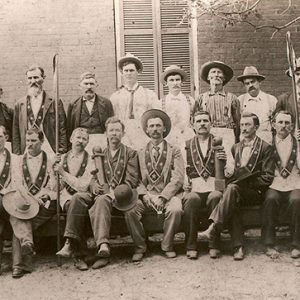 Dover Masons
Dover Masons 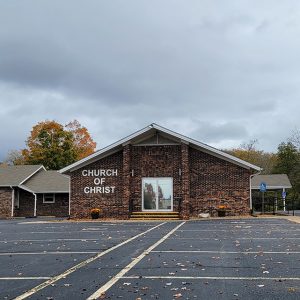 Dover Church
Dover Church  Dover Fire Department
Dover Fire Department  Dover Jail
Dover Jail  Dover Library
Dover Library  Dover Masonic Lodge
Dover Masonic Lodge  Dover Park
Dover Park 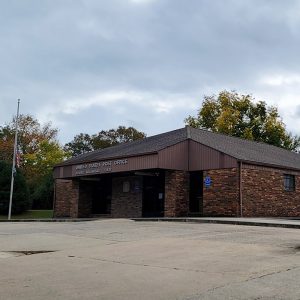 Dover Post Office
Dover Post Office  Dover Street Scene
Dover Street Scene  Dover Street Scene
Dover Street Scene 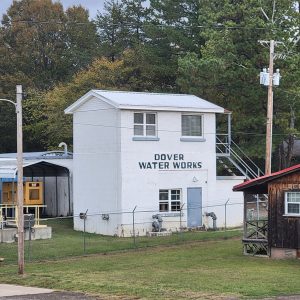 Dover Water Works
Dover Water Works 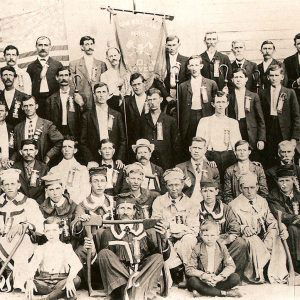 Dover Woodmen
Dover Woodmen  Entering Dover
Entering Dover 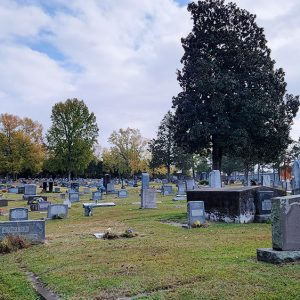 McFadden Cemetery
McFadden Cemetery  Pope County Map
Pope County Map  Record Cave Marker
Record Cave Marker 



Comments
No comments on this entry yet.